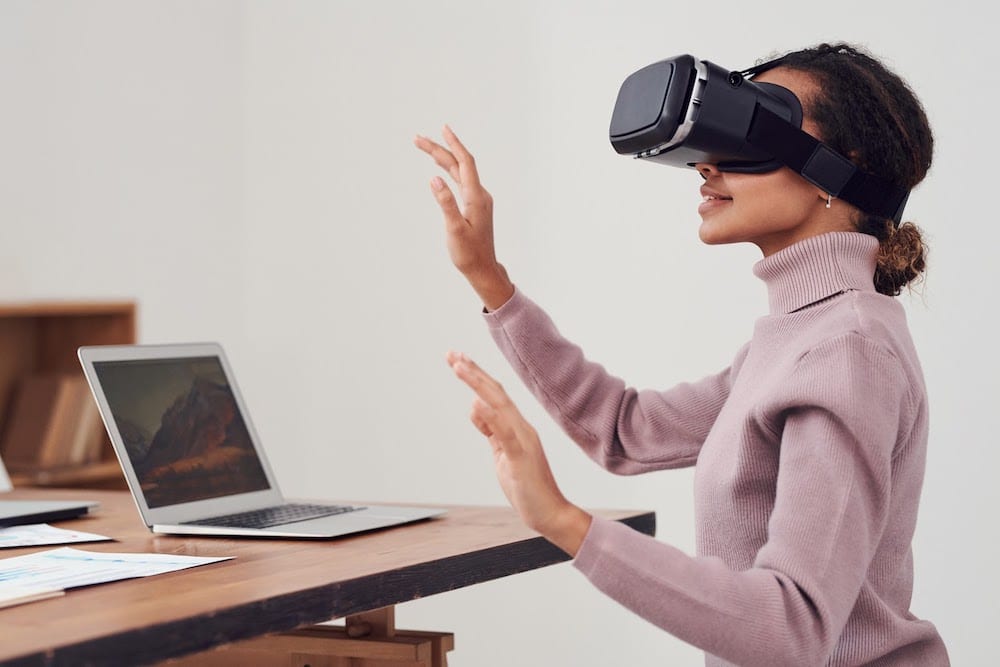We are now digital citizens who book appointments online, talk on video chats, and share memes created by others online. Digital literacy can help us grasp these 21st-century skills and apply them to our daily lives.
However, studying digital literacy is not just about learning how to text friends or post on social media. Digital literacy is far more complex and is centered on effectively using digital tools, content, and communication technologies to our advantage. This could be learning to use the Internet to find employment, researching and critiquing the information you read online, and much more.
This article will explain the meaning of digital literacy and show you how to become more digitally literate.
What Is Digital Literacy?

The majority of people will have some digital literacy skills, from sending emails, asking Google questions, and creating online content. But the need to be more digitally literate is only increasing as many students are now pursuing their education online.
Below are some of the different aspects of digital literacy and what they mean.
Digital Technology
Becoming familiar with digital technology is, in many ways, one of the first steps to digital literacy. Learning how to use different technological devices and software ensures you will know how to navigate the digital arena. For example, the screen and mechanisms on a mobile phone are vastly different from that of a laptop. Simple things like moving a mouse can be intuitive to some, and take time for others to learn.
However, digital technology is about more than just a computer or smartphone. It can encompass a variety of different hardware technologies and anything within those devices, too. For example, a website, digital televisions, eBooks, digital music, digital cameras, clocks, robotics, and social media all fall under the digital technology umbrella.
Media Literacy
Learning to consume media safely is a priority of digital literacy. We have all heard the term “fake news” and students need to be aware that not all of the information they come across on the Internet will be valid. Mastering critical thinking skills to evaluate content can help students differentiate the good sources of data from the less trustworthy ones.
Digital Footprint
A digital footprint is the online “paper trail” you leave behind when using the Internet or creating content online. The term “passive digital footprint” is created by your computer’s IP address, which is a mixture of your physical location and your Internet provider information.
This can track what websites you have been on and leaves a kind of digital footprint.
Digital footprints come from activities such as sending an email, creating a blog, posting images of yourself or your creation, uploading your CV and profile to job application websites, creating your own websites, and using social media. This kind of footprint can usually be accessed by someone else online.
Digital Environment
A digital environment refers to the different layouts and software available to you. Each digital device will have a specific layout and learning that layout is important for navigation. It also refers to software within the digital environment, like apps, Word, Excel, Outlook, and more.
Digital Literacy Skills
Below are some of the skills that learning digital literacy provides.
Critical Thinking: To be able to think critically and evaluate the information found online to make ethical decisions in a digital environment.
Online Safety: Teaching students to be aware of the dangers of the Internet, and to not incite cyberbullying. Especially for younger students, online safety is extremely important.
Collaboration and Creativity: Digital literacy is a great way to teach students to create content together.
Online Communication and Culture: The Internet has a culture of its own, it’s own digital world even. Teaching students to build good online communication skills, and learn about online culture will help them throughout adult life.
Finding Information: Finding and understanding digital information is also a core skill. Learning about the value of one source of information over another will help students in their studies and in their careers later in life.
Is Digital Literacy the Future?

The education system in the United States is turning toward building digitally-native students. Digital technology is one of the core elements in learning, working, and living.
Statistics show that in the US, 84 percent of adults aged 16 to 65 are digitally literate, while 16 percent do not have sufficient competency. That 16 percent is expected to decrease in the coming years.
Digital literacy is definitely the future as technological advancements continue. If you try to think of ways in which digital literacy is part of our lives, the list is endless. For example, a digital alarm clock, the self check-out machines in shops, bank machines, online banking, booking a restaurant or event online, watching gigs online, social media, reading content, the list goes on.
About us: Career Karma is a platform designed to help job seekers find, research, and connect with job training programs to advance their careers. Learn about the CK publication.
